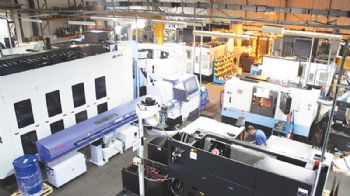
With so much at stake in the world of motor-sport engineering, there is a constant need to refine machine performance and tighten tolerances, which means embracing the latest technological advances.
For the last 50 years, Kent-based RT Quaife has been producing transmissions, drivetrains, axles and other components to an exceptional level of quality, but keeping up with the competition has involved an extensive revision of its manufacturing methods, with older processes phased out.
Company owner Michael Quaife says: “About five years ago, we had four bar-fed machines and another six-spindle lathe turning pinions for differentials, which is our biggest market, so these machines were running constantly. It was a frustrating way to work; the machines took up a lot of space and products almost always required additional milling
operations, so we turned to Star GB to streamline the shopfloor.”
After consultations with the sliding-head lathe specialist (
www.stargb.com), Mr Quaife bought two Star SR32J sliding-head lathes — and quickly saw huge improvements in its production.
“We are much more quick and efficient since we began working with Star. The two new lathes have taken the place of five older machines and are capable of twice as much work. We ended up doubling a particular customer’s order, which is actually the reason we bought the second machine — we needed the extra capacity.”
Production manager Karl Green says: “Changing the bar autos over from producing pinion blanks was always a long process. Because the Star machines are fully NC, it’s just re-setting once you have the program, so change-over times are very quick.
“The range of parts we can make now is immense. One complex part in particular used to require two turning ops and three milling ops, which meant lots of handling; we can now make it in 6min in a single operation.”